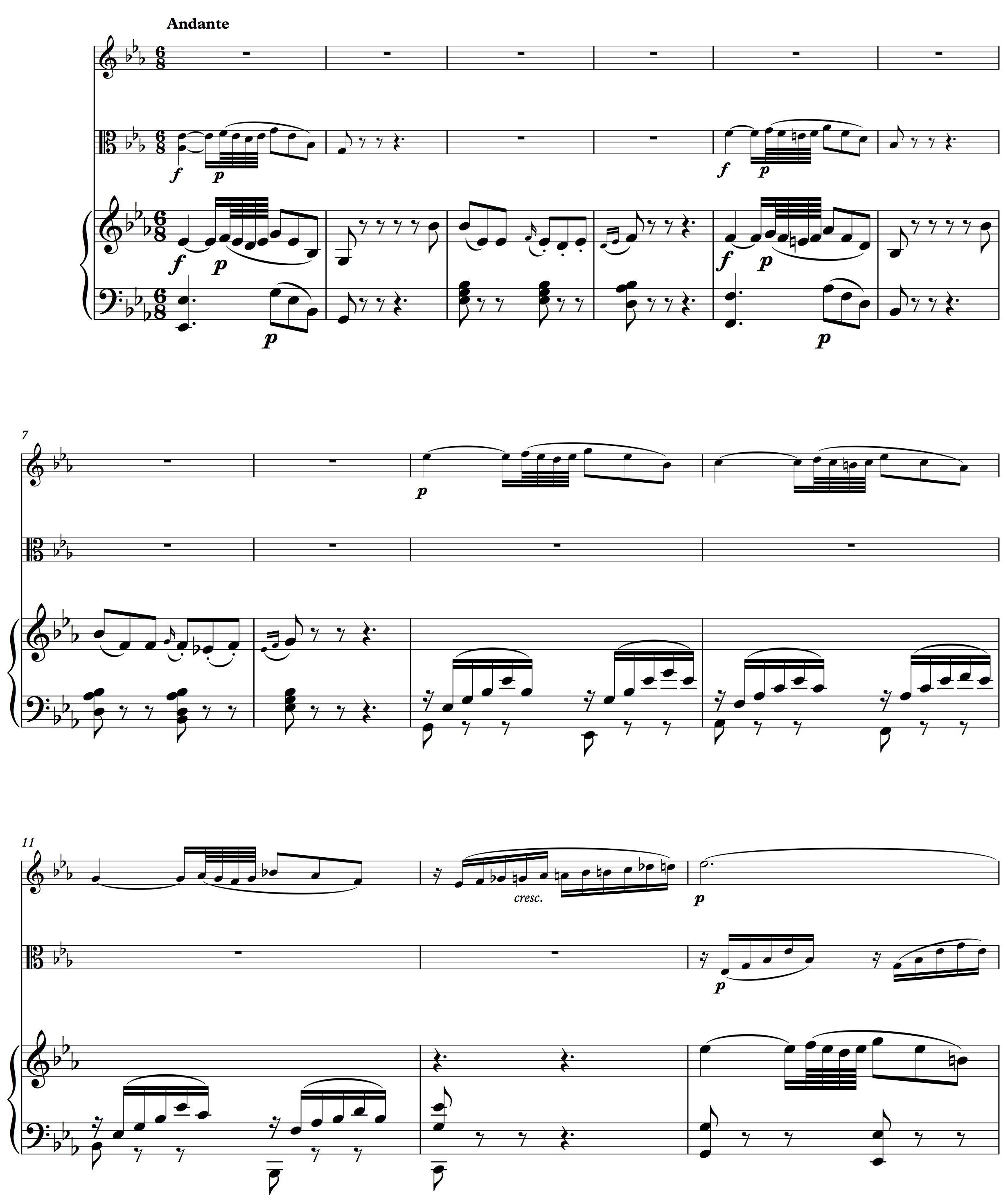Inquiry-Based Music Theory OER Text Book
13c Lesson - Combining Periods and Sentences
Class discussion
Further reading
From Open Music Theory
Combining Periods and Sentences
Hybrid themes mixes the functional features of sentences and periods. William Caplin has identified four primary types:
Hybrid 1
Hybrid 1 combines an antecedent phrase with a continuation phrase.
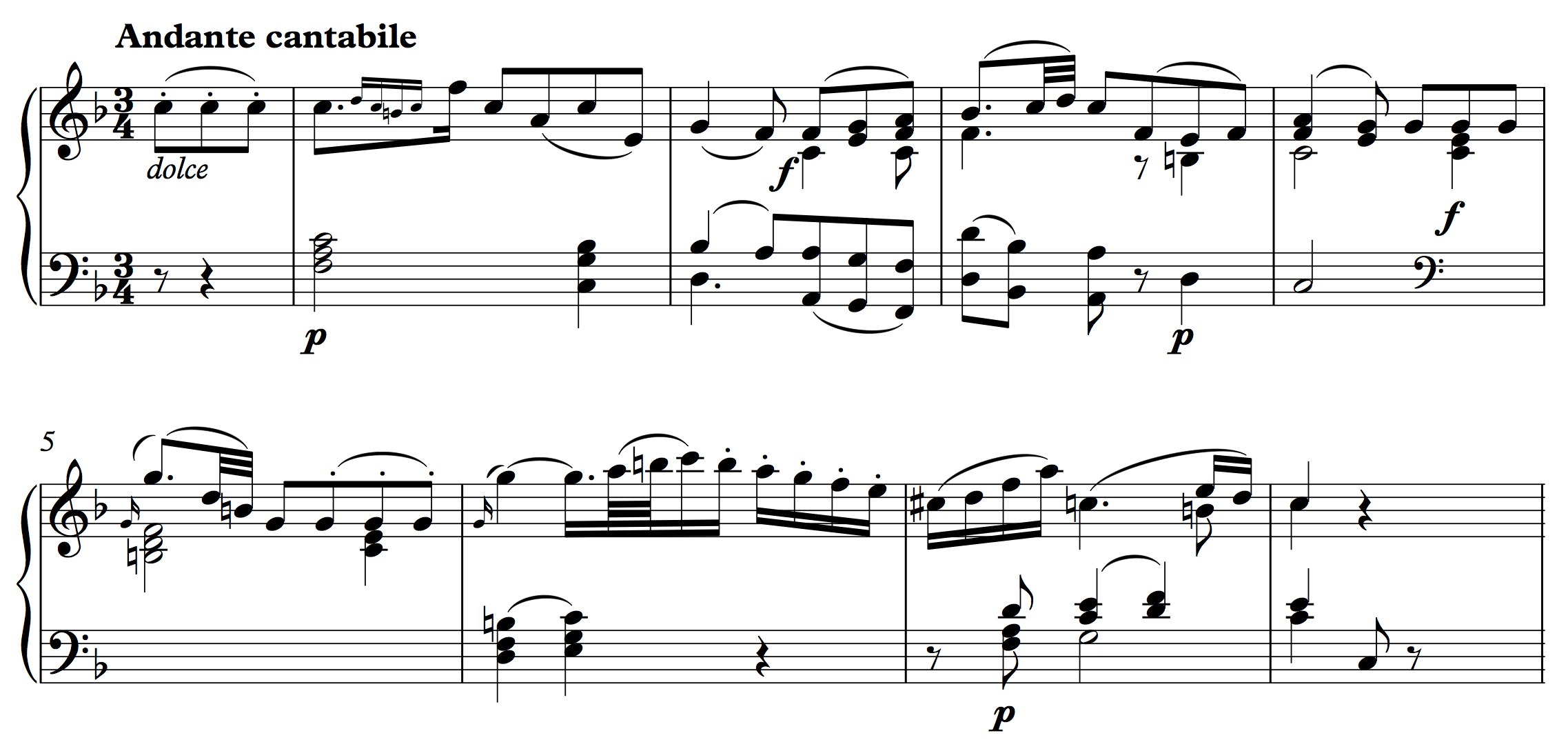
A prototypical example is found in the first eight measures of Mozart’s Piano Sonata in C major, II. The antecedent phrase contains a basic idea characterized by the repeated notes forming its anacrusis. This is followed by a contrasting idea formed from a scalar ascent leading to the phrase’s half cadence in m. 4. Following the antecedent phrase, the music begins to express continuation function, primarily through fragmentation and an increase in surface rhythm. In the middle of m. 6, the characteristic melodic motives are liquidated into conventional scalar figuration leading to a V:PAC.
Hybrid 2
Hybrid 2 combines an antecedent phrase with a four-measure cadential progression.
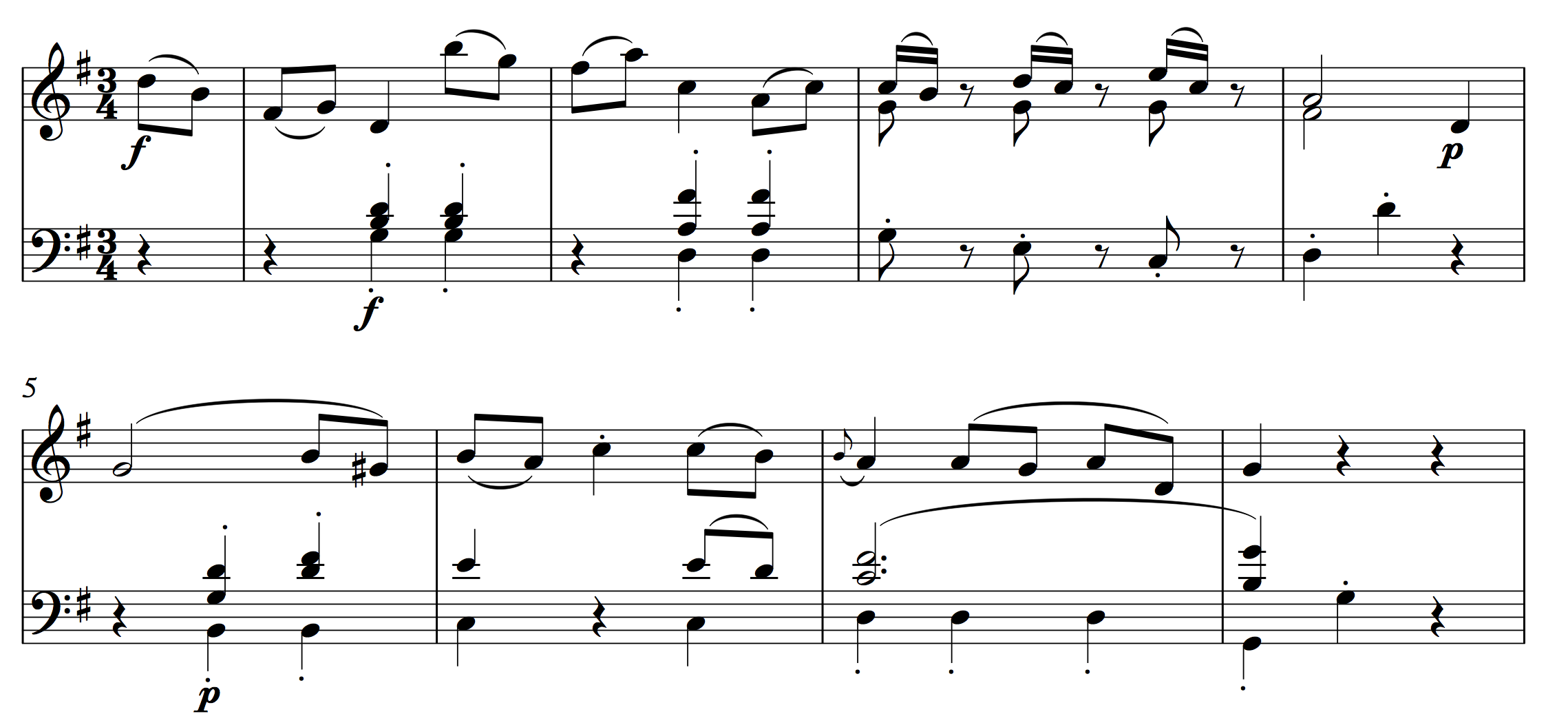
Here, the four measures subsequent to the antecedent support a single cadential progression:
I6 ii6/5 V I
Notice that this four-measure phrase does not display any markers of continuation function.
The Compound Basic Idea
Just as we sometimes find composers combining different features of the two primary thematic types, we also often find combinations of different types of phrase. The “compound basic idea,” or CBI, combines the melodic characteristics of the antecedent function with the harmonic characteristics of the presentation function. Like an antecedent, it presents a basic idea followed by a contrasting one. But like a presentation, the compound basic idea simply prolongs tonic, without ending in a cadence.
Hybrid 3
The third hybrid type strongly resembles the first hybrid. Rather than beginning with an initiating antecedent, however, its first phrase is a CBI. Following the CBI, Hybrid 3 concludes with a continuation that ends with a cadence.
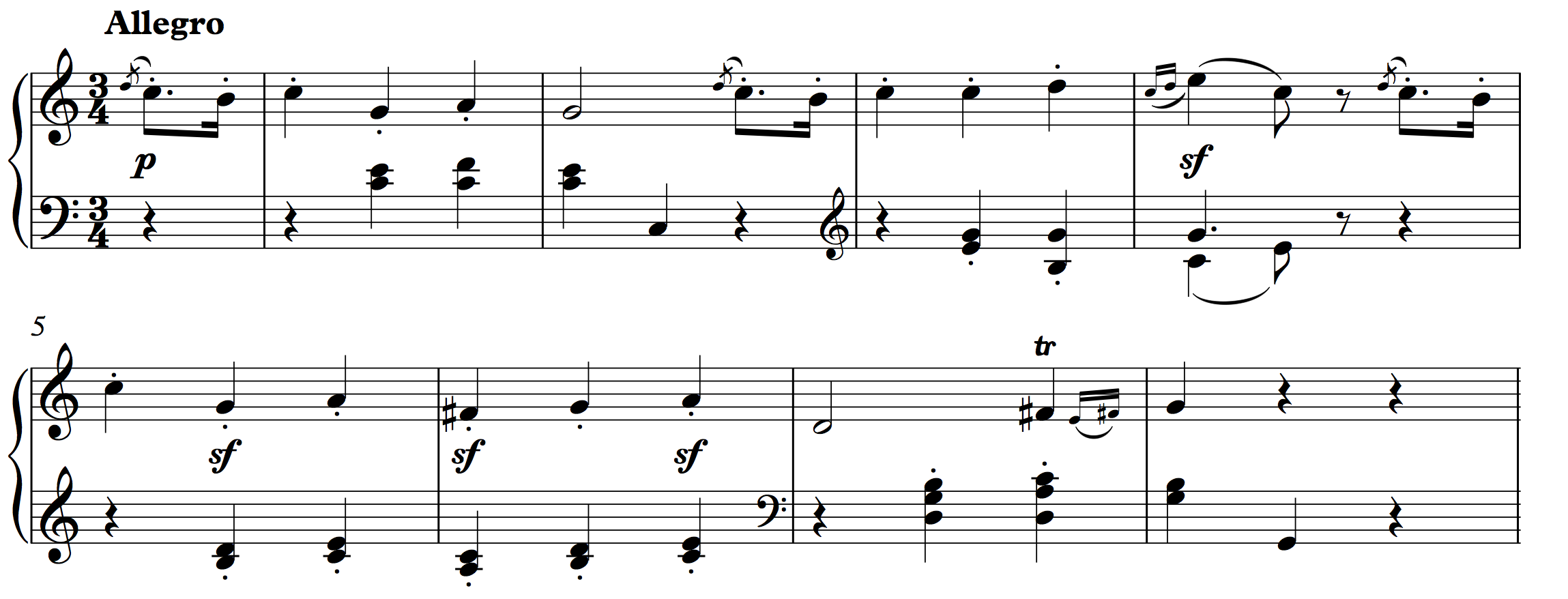
In this example, from Beethoven’s Violin Sonata, Op. 30, the melodic structure of the initiating phrase contains two contrasting ideas, each of which begins with the same dotted figure. However, unlike a typical antecedent, the phrase only prolongs tonic as the V6 on the last beat of m. 3 only decorates the tonic through a lower neighbor motion rather than creating cadential articulation. Thus, the phrase is best understood as a “compound basic idea.”
The concluding phrase is a typical continuation expressed through fragmentation, melodic sequence, and increased harmonic rhythm.
Hybrid 4
Hybrid 4 resembles the period, with the exception that the first phrase is comprised of a “compound basic idea” rather than an antecedent. Following the CBI, the concluding phrase expresses the function of a consequent, typically altering the return of the contrasting idea so that the theme ends with a strong cadence.
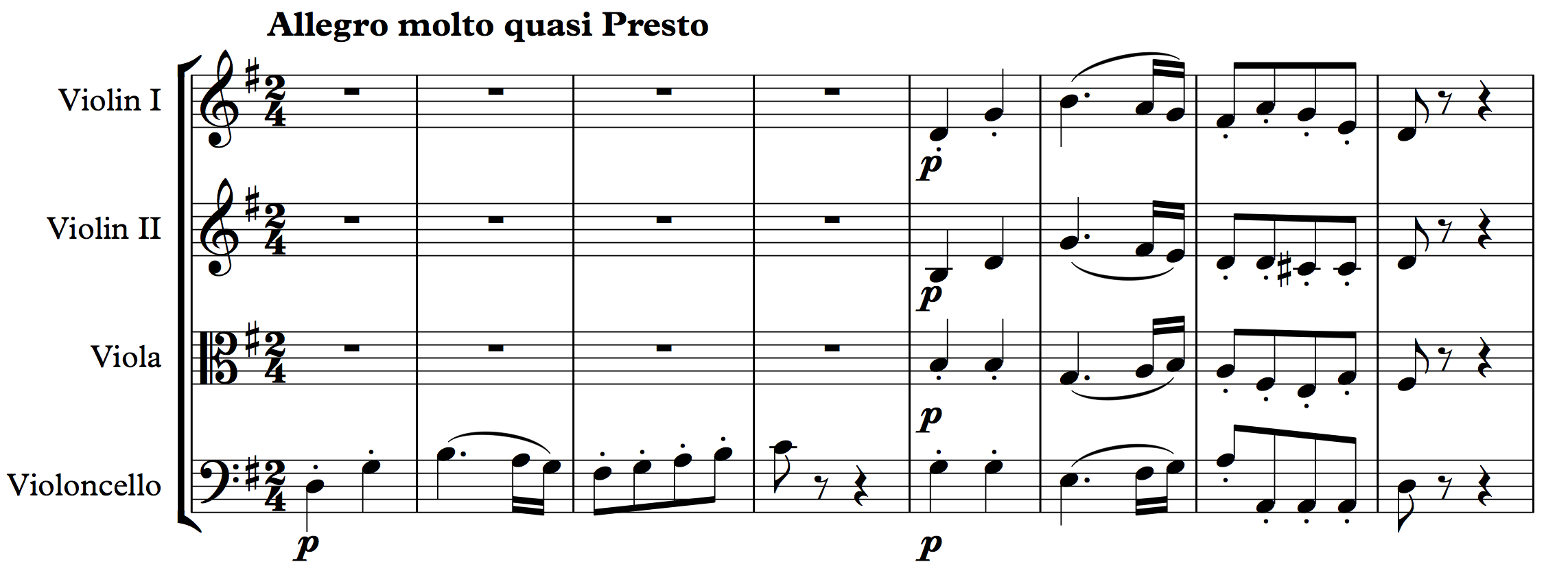
The cello’s presentation of the initiating phrase contains two distinct melodic ideas. But this phrase’s conclusion, on the C4 in m. 4, is not sufficient to create cadential closure. When the remaining strings enter in m. 5, they work through the same basic and contrasting ideas, but are able to create a I:PAC to close the consequent phrase.
Compound Periods
The compound period (also called the 16-bar period because its typical form is 16 bars long) is made of two themes instead of two phrases. Like an 8-bar period, the two halves of the compound period exhibit antecedent and consequent function. To distinguish them, we will call these “large antecedents” and “large consequents.”
The thematic types available to the two halves of the compound period must be conducive to the functions of antecedent and consequent. Thus,
- the initiating phrase of the large antecedent, usually four bars long, will act as a basic idea - either presentation, antecedent, or compound basic idea;
- the concluding half, also typically four bars long, will act as a contrasting idea and will always be a continuation;
- the large consequent should return the BI from the first theme (often varied), and its concluding CI will end with a strong cadence.
These functional requirements tend to result in three types of compound period.
A Compound Period Comprised of Two Sentences
Both sentences in the compound period will have the same basic idea, each exhibiting presentation function. In the first sentence, the presentation is followed by a continuation that ends with a weak cadence. In the second, the continuation culminates in a strong cadence, most commonly a PAC.
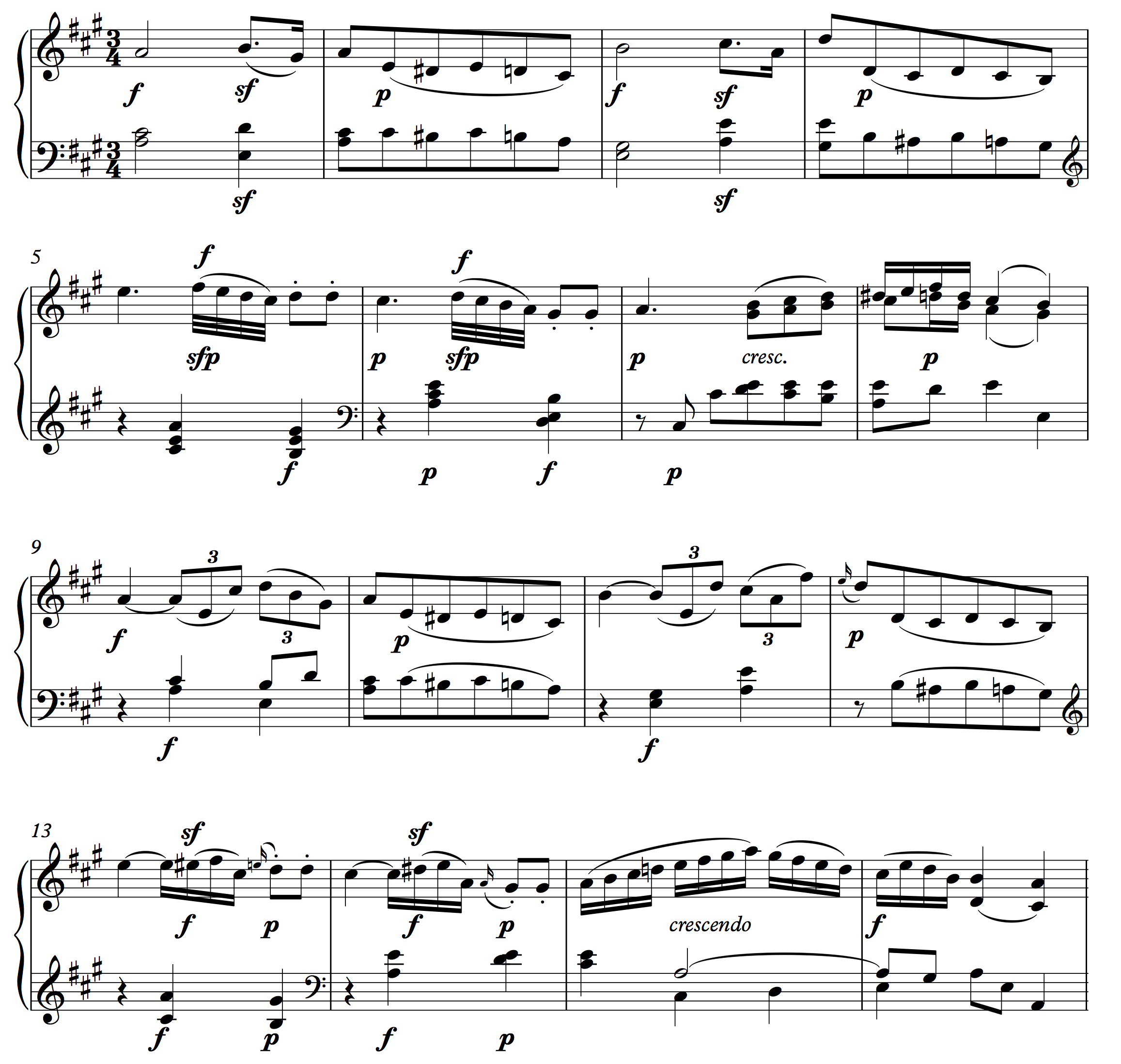
The large antecedent is constructed as a sentence whose basic idea is a presentation and whose contrasting idea is a continuation. Following the HC in m. 8, the next phrase restates the presentational basic idea in varied form. The final four measures culminate in a PAC.
A Compound Period Comprised of Two Hybrids
If the initiating phrase is composed of an antecedent, rather than a presentation, the 8-bar antecedent phrase will be a hybrid of the “antecedent + continuation” variety.
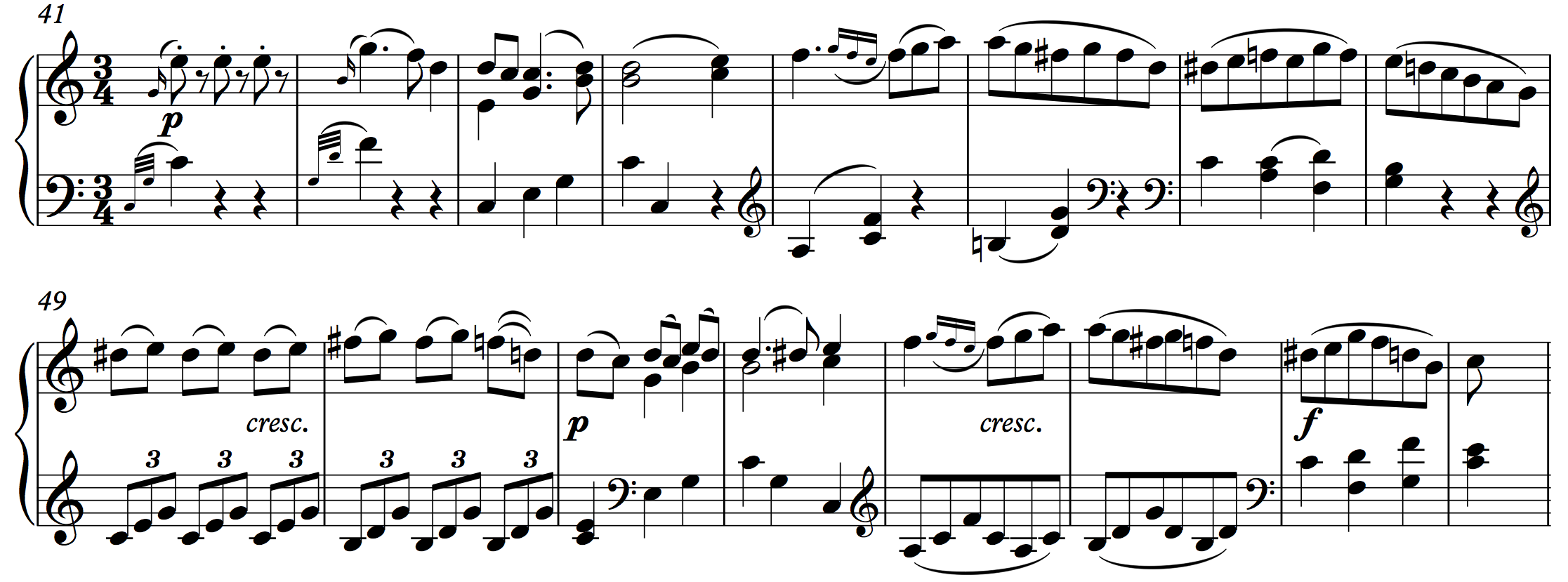
In this example the large antecedent begins with a small antecedent, comprising mm. 41-44, that acts as a basic idea. In the large consequent, this basic idea returns (mm. 49-52) in varied form.
By contrast, if the initiating phrase is composed of a “compound basic idea”, the large antecedent will be a type-3 hybrid: compound basic idea + continuation. This type of compound period is very similar to the previous variety. The only distinction is that the initiating phrase will not culminate in a cadence, thus giving the theme’s initiation a looser quality.
Compound Sentences
The compound (or 16-bar) sentence expands both the presentation and continuation phrases of a regular sentence to a length of eight bars each.
Each 2-bar basic idea is replaced by a 4-bar compound basic idea in the expanded presentation.
A “typical” continuation would have approximately four bars of continuation function followed by four bars of cadential function, but in a compound sentence, this varies greatly. The continuation is commonly shortened or expanded.
The eight bars that comprise the continuation of the main theme below are constructed from two compound basic ideas, the first beginning on tonic and moving to dominant (mm. 1-4), and the second beginning with dominant harmony and moving back to tonic (mm. 5-8).
Initially, the continuation seems as if it will end after only 4 bars, in m. 12. But the clarinet is missing at the the downbeat of m. 12, and instead begins a link to a four-bar repetition. In this repetition (mm. 13-16), the clarinet melody from mm. 9–12 is played by the piano, who cadences clearly with a PAC at the downbeat of m. 16.
